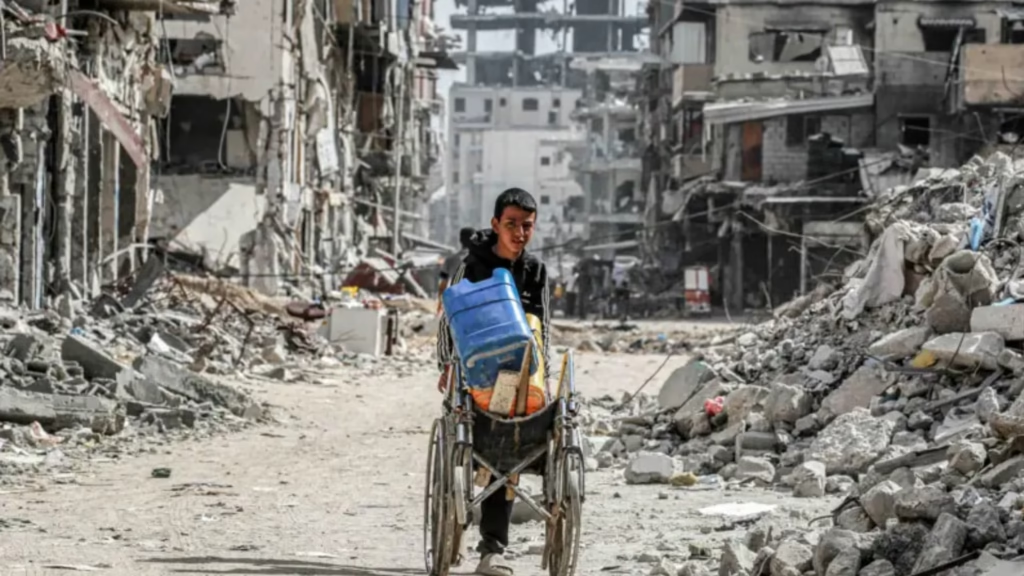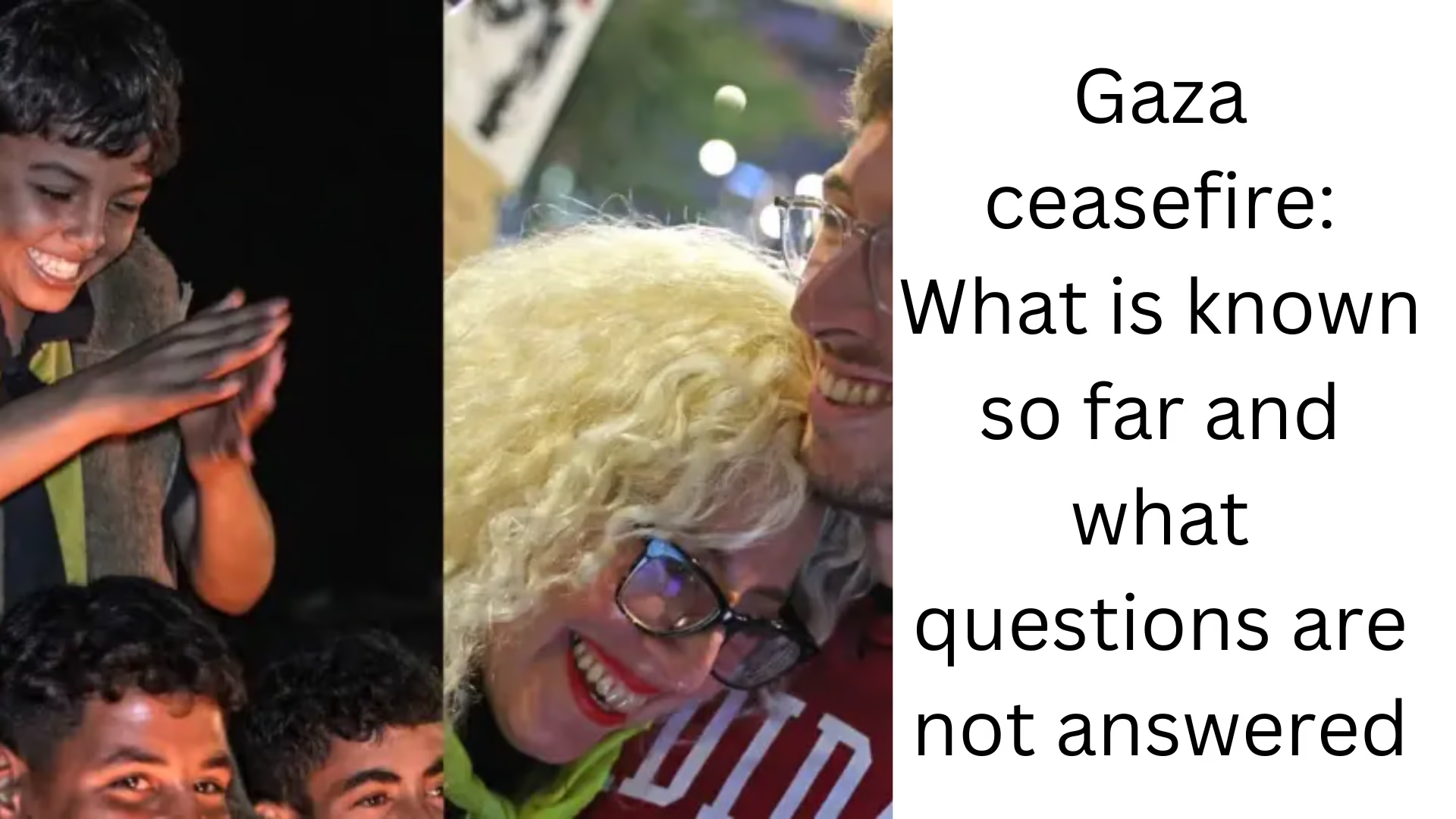The US and Qatar have announced that Israel and Hamas have agreed to stop the war in Gaza.
Now not only will the fighting stop but Israeli hostages and Palestinian prisoners will also be released.
The agreement of both sides is being considered a major success after the war that has been going on for 15 months.
This war started when the armed Palestinian group Hamas attacked Israel on October 7, 2023.
What does this agreement mean for both sides?
The details of the agreement between the two sides have not been shared yet.
Israeli Prime Minister Benjamin Netanyahu said that there are still many unresolved aspects, which he is looking into.
Under this agreement, the war in Gaza will stop. After this, there will be an exchange of hostages and prisoners.
When Hamas attacked Israel in October 2023, it took 251 people hostage. Hamas still has 94 people held captive. However, Israel believes that only 60 of them are alive.
It is likely that under the agreement, Israel will release about 1,000 Palestinian prisoners in exchange for the hostages. Some of these have been in Israeli jails for many years.
How can the ceasefire work?
After the agreement is announced, this ceasefire will proceed in three phases. Although both sides have agreed to it, Israel’s security cabinet still has to approve it.
Qatar Prime Minister Sheikh Mohammed bin Abdul Rahman Al Thani said that if this agreement is approved in the cabinet, it will be implemented from Sunday.
Let us know how this deal will move forward now-
Also read: Gaza ceasefire: The war will stop but will the dispute between the two sides be resolved
First phase
US President Joe Biden, while giving information about the agreement on Wednesday, said that the first phase will last for six weeks and there will be a ‘complete ceasefire’ in it.
Biden said that under the deal, Hamas will release the hostages and Israel will release the Palestinian prisoners.
But Biden did not say how many hostages Hamas is going to release in total. But Qatar PM Al Thani told a press conference on Wednesday evening that this number would be 33.
Israeli government spokesman David Menser had earlier said that the 33 hostages who are likely to be released include children.
A Palestinian official had told the BBC that three hostages would be released immediately and the exchange with the remaining Palestinian prisoners would take place over the next six weeks.
Biden said that during this phase, Israeli troops will leave all populated areas of Gaza. Also, Palestinians will be able to return to their homes in all areas of Gaza.
About 2.3 million people in Gaza have become homeless due to Israeli attacks. After the ceasefire, these people will be able to return to their homes.
In addition, humanitarian aid will also increase in Gaza and hundreds of trucks will be allowed to reach there every day.
A Palestinian official told the BBC that talks for the second and third phases would begin on the 16th day of the ceasefire.
The US President said that the ceasefire will continue as long as the second and third phase talks continue.
Second phase
According to US President Joe Biden, the aim of the second phase will be ‘a permanent end to the war’.
In this phase, the remaining surviving hostages and Palestinian prisoners in exchange for them will be released.
It is believed that Israel has agreed to release a total of 1,000 Palestinian prisoners. About 190 of these are serving sentences of 15 years or more.
An Israeli official told the BBC that those convicted of murder will not be released.
Apart from this, there will be a complete withdrawal of Israeli troops from Gaza.
Third phase
The third and final phase will include the reconstruction of Gaza. This may take several years. In this phase, the bodies of hostages killed under Hamas’s control will also be handed over to Israel.
The deal does not have answers to these questions
Whatever has been achieved now has been achieved after months of difficult negotiations. The main reason for this was that Israel and Hamas did not trust each other at all.
Hamas wanted a complete end to the war before releasing the hostages. But Israel did not agree to this.
The fighting will be completely halted while the two sides negotiate the terms of the ceasefire.
Will the war stop forever?

It is not clear.
One of Israel’s main objectives in the war has been to destroy Hamas’ military and governing capabilities. Israel has inflicted heavy damage on Hamas, yet Hamas can stand back on its feet.
It is also not clear which hostages are alive and which are dead. It is also not clear whether Hamas knows all the hostages who are missing or whom Israel is searching for.
Hamas, on its part, has demanded the release of some prisoners, but Israel says it will not release them.
These include militants believed to have taken part in the October 7 attacks.
What about the buffer zone?
It is also not clear whether Israel will agree to withdraw from the buffer zone by a certain date, or whether its presence in the buffer zone will continue indefinitely.
Ceasefires between Israel and Hamas have broken down in the past after sporadic clashes.
The timetable and complexity of this ceasefire means that even a small incident could trigger a war again.
How will the deal be implemented?
The US and Qatar have announced the deal but it is yet to get the approval of the Israeli cabinet. However, despite the right-wing being in power in Israel, it is believed that there will be no problem with this.
An important cabinet meeting is likely to be held on Thursday morning.
On being asked about the deal going into the second phase, Qatari PM Al-Thani said that he has full faith in it but everything will depend on both the parties.
When asked what will be done to make the deal successful, he said, “The US, Egypt and Qatar will monitor the implementation of the agreement.”
Who will rule Gaza?
The biggest unanswered question is who will rule Gaza after the ceasefire.
Before the announcement of the agreement on Wednesday, Palestinian Prime Minister Mohammad Mustafa had said that as per the rules, the right to rule Gaza is with the Palestinian Authority.
Israel does not want Hamas to rule Gaza.
But Israel also does not want the Palestinian Authority to rule Gaza. This authority rules parts of the Israeli-occupied West Bank.
And Israel also wants to have military control over Gaza even after the conflict ends.
Israel is discussing a plan for a temporary administration to run Gaza with the US and Qatar. This new structure could take the form of a permanent government in Gaza.
What happened on 7 October 2023 and what has happened in Gaza?
Hundreds of Hamas gunmen launched an unprecedented attack on southern Israel. The extremists broke the fence and entered the Israeli border. They targeted police stations, military bases, and several border settlements.
About 1,200 people were killed in these attacks and more than 250 hostages were taken back to Gaza by Hamas fighters. Hamas also fired thousands of rockets at Israel.
In response, Israel launched a large-scale military operation, first through air and then ground invasion.
Since then, Israel has been attacking Gaza from land, sea, and air. Hamas has also attacked Israel with rockets during this period.
Israel’s attacks have devastated Gaza. There is a huge shortage of food items there.
The international community is also not able to properly provide aid to the needy.
According to the Hamas Health Ministry in Gaza, more than 46,700 people have been killed in Israeli attacks so far. The ministry claims that most of them are civilians.


